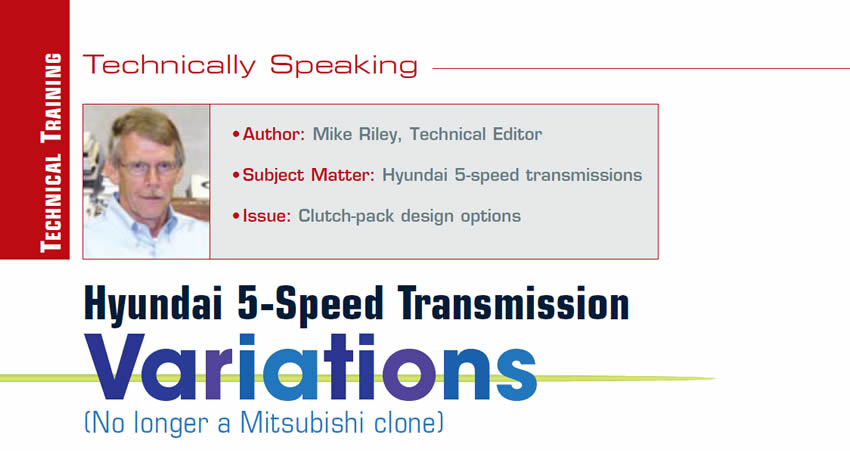May 2016 Issue
In This Issue
Allison electrical harness upgrades
Nissan Versa that slips and hesitates
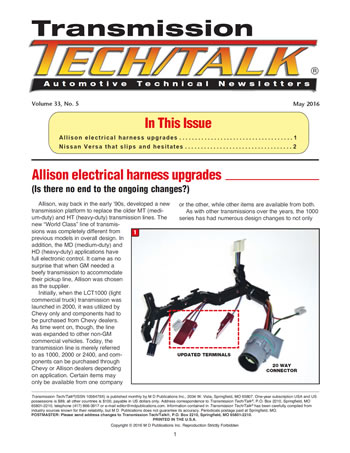
Misinformation forces tech to work harder
As with most of the accounts we’ve shared detailing vehicle symptoms and repairs, electrical issues seem to be the most common root cause. Our subject today involves a 2003 Dodge Sprinter 2500 that showed up at our door with the customer informing us that they could not shut it off since it would not restart without jumping the solenoid on the starter. The gentleman stated it would not start with the key, the shifter would not come out of park and the transmission would not shift. He also stated that we had installed a TCM about a year ago, and because it did not shift, the customer thought it was related to what we had done. He also stated he had replaced the fuse in the fuse panel for the transmission and that didn’t help. Apparently, we needed to diagnose some electrical problems.

Different Designs for Different Diffs
We work on drivelines for a living. The transmission makes the torque created by the engine into a usable form through steps (gears), the lowest of which transmits the most usable torque, and the highest of which can transmit the most rotational speed. The transmission sends that power to a third member or rear end, or in front-wheel drive, a rear end contained inside the gear box, without a drive shaft. The rear end now transmits the power to the drive axles and wheels, making a 90° turn through the ring and pinion gears. Transmission gears and the rear-end ratios are matched to the power curve of the engine to provide the most fuel-efficient speeds. The ring gear is mounted to a differential carrier, or in many front-wheel-drive transmissions, a planetary-type of carrier. The differential is contained inside the carrier.

All in the Family
You may have noticed some similarities over the years in regard to a family of Chrysler transmissions that began with the Ultradrive 4-speed automatic in 1989. In its day it was fairly innovative, featuring clutch-to-clutch operation (no bands) and adaptive shift technology. Over time, the basic structure has developed into a variety of different models, some with 5- and 6-speed variations.
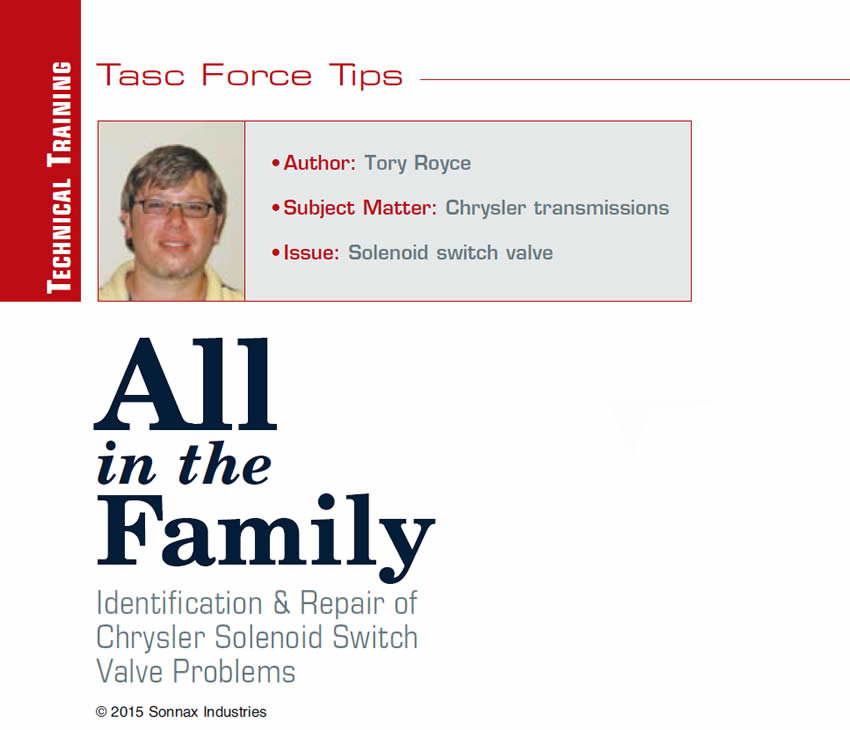
Cadillac CTS No Movement Condition (The Fix Requires More Than One Item)
The owner of a 2010 Cadillac CTS started to notice a clicking sound when placing the transmission into drive or reverse. Due to a busy schedule, the owner chose to delay bringing the vehicle in for an inspection, until one morning that the transmission failed to make any noise. The noise was gone, replaced by a no-movement condition that brought the busy schedule to a screeching halt.
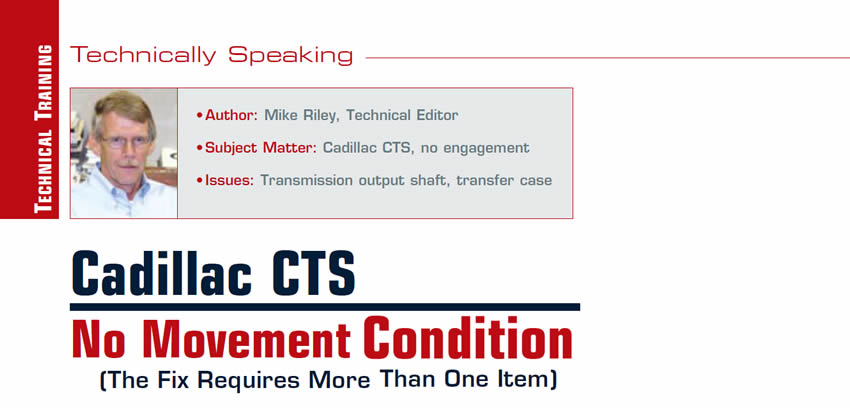
Chew on This: Curious Tech Sinks His Teeth into a Start-Stop Problem with a Prius Hybrid
“My check-engine light came on in my Prius,” one of my customers told me. “Is it OK to drive it home?” “Is it running OK?” I asked her. “It seems to be running fine. I just need to get home. Then I can get my husband to follow me to your shop.” “Well, if it’s
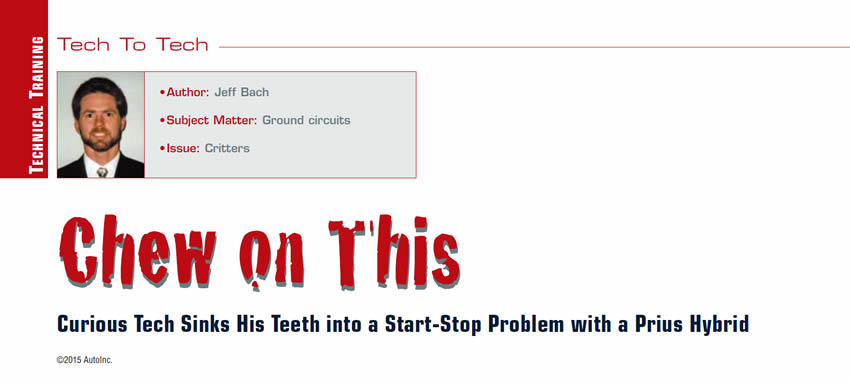
Why Your Customers Aren’t Buying What You’re Selling
The language you use while making a sale is critical. If what you are presenting comes across as being a negative, your customer is going to look elsewhere. Most businesses are not buying used DVDs, but it’s the same basic principle no matter what you are selling.

Beyond the Pressure Regulator: Keeping Cool While Investigating Mystery Honda Overheat
Most transmission technicians are aware of the notorious loss of proper converter feed that plagues various Honda transaxles. For those who are less familiar, converter charge oil is cut because there is not enough pump output to keep the pressure regulator valve in the regulating position, allowing the TCC to drag and eventually disintegrating the lining. Many technicians have already learned the importance of installing a modified pressure regulator valve during overhaul that ensures converter charge pressure is available at all times, regardless of pressure regulator valve position.

When TCM gets cold feet
A couple months ago we had a customer contact us about a problem that he was having with his 2000 Nissan Frontier 4wd Pickup. While he had some trouble explaining the exact symptoms that were occurring, we understood that the problem only seemed to happen when it was driven first thing in the morning, and that in simple terms, “it just didn’t want to go.” We arranged an appointment for him to drop off the vehicle with us so we could perform our initial diagnosis and evaluation after the vehicle sat outside overnight.
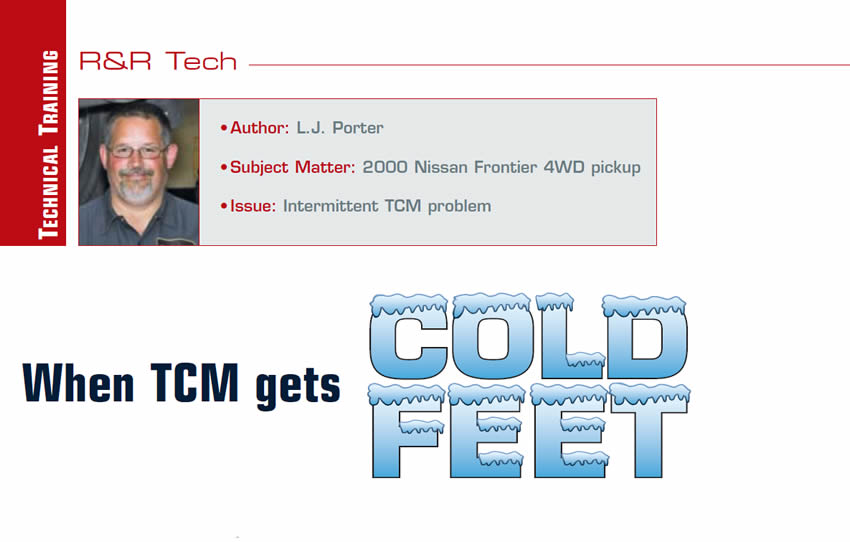
How Expenses Can Sneak Up on You and What You Can Do about It
Anyone who has been in the transmission or auto-repair business for a while has experienced this: You come to one of those rare points in time when you think you’ve purchased all the equipment you need, all of your major bills are paid, your debts are all manageable, and you start to feel like you can finally take some of the profits out of the company that you worked so hard to make. Then you wake up. It was a nice dream, wasn’t it? The reality is that there is always something more to purchase or a new or increased expense with which to contend. There’s always a new tool or machine that you yourself or someone else convinces you that you just can’t live without, while at the same time every utility and government agency is working as hard as it can to get you, the small-business person, to pay more.
April 2016 Issue
In This Issue
Mercedes GLK growling noise
Porsche Transmission Converter Seal Leak
Subaru AWD Transmission Variations
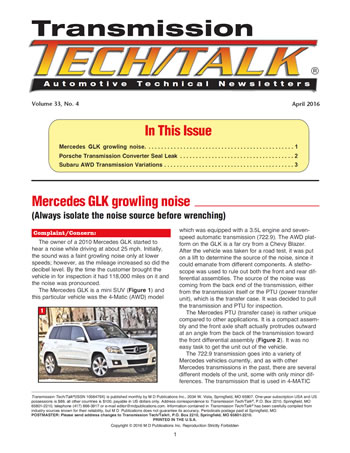
Hyundai 5-Speed Transmission Variations (No longer a Mitsubishi clone)
For a lot of years Hyundai, in order to avoid development cost, utilized Mitsubishi for their automatic-transmission needs. All that changed in the early ’90s when Hyundai decided to get into the research and development end of the business by releasing their version of the old Mitsubishi KM series of automatic transmissions. The Hyundai A4A/A4B series of transmissions was launched in 1993, which did have some noticeable differences from Mitsubishi, especially in 2000 when the F3 model was released utilizing six solenoids. Even the case configuration was different from Mitsubishi.
